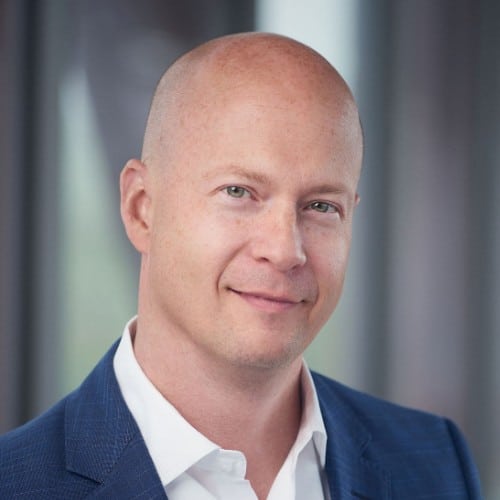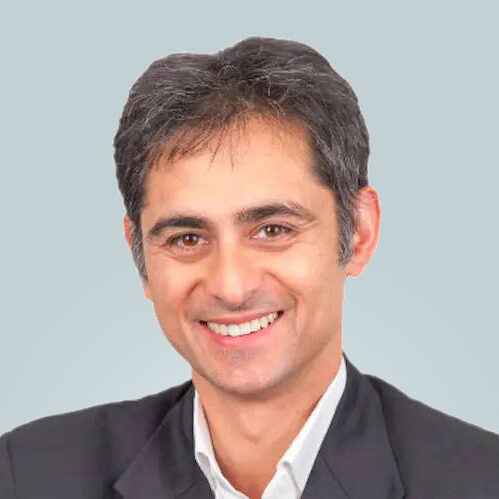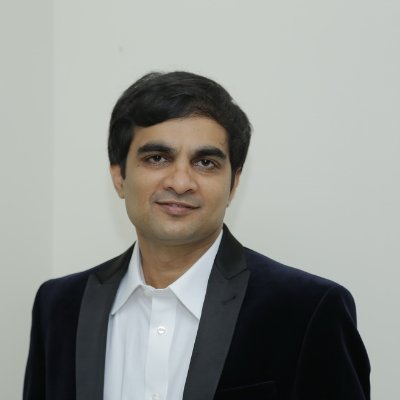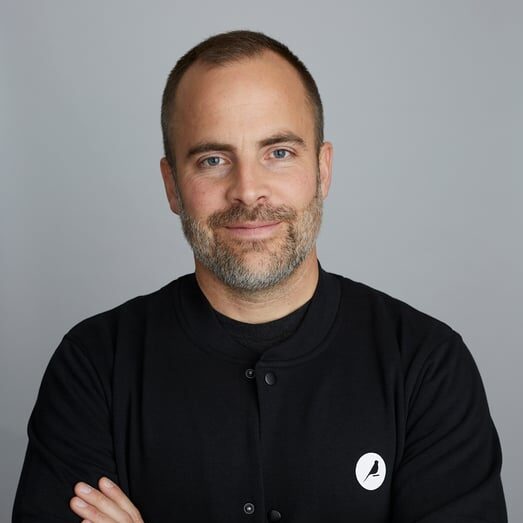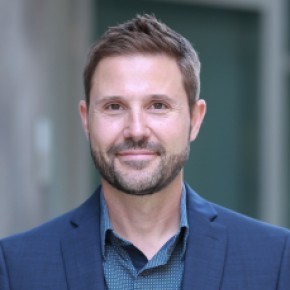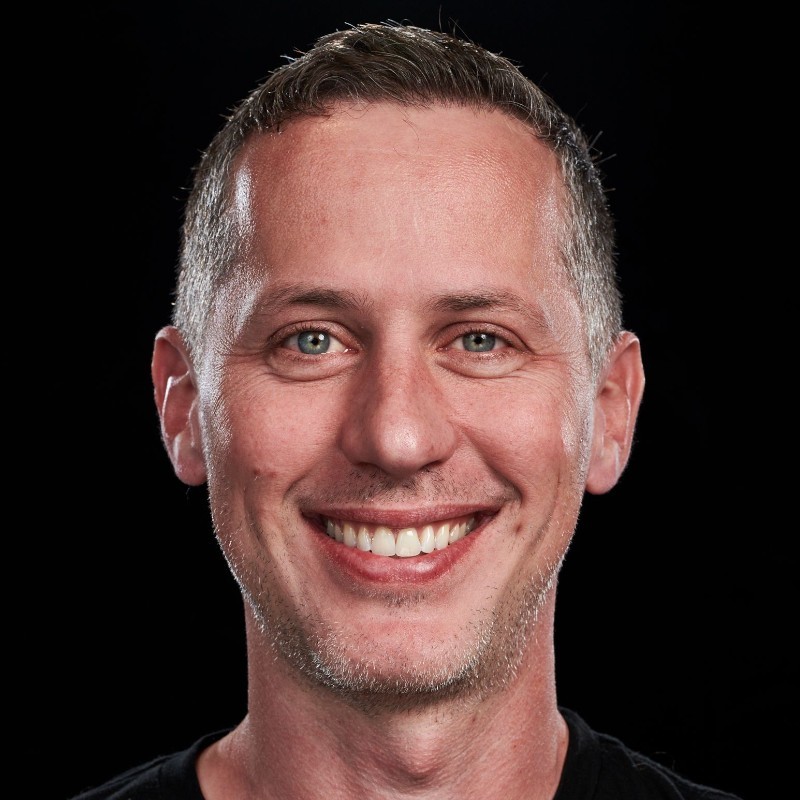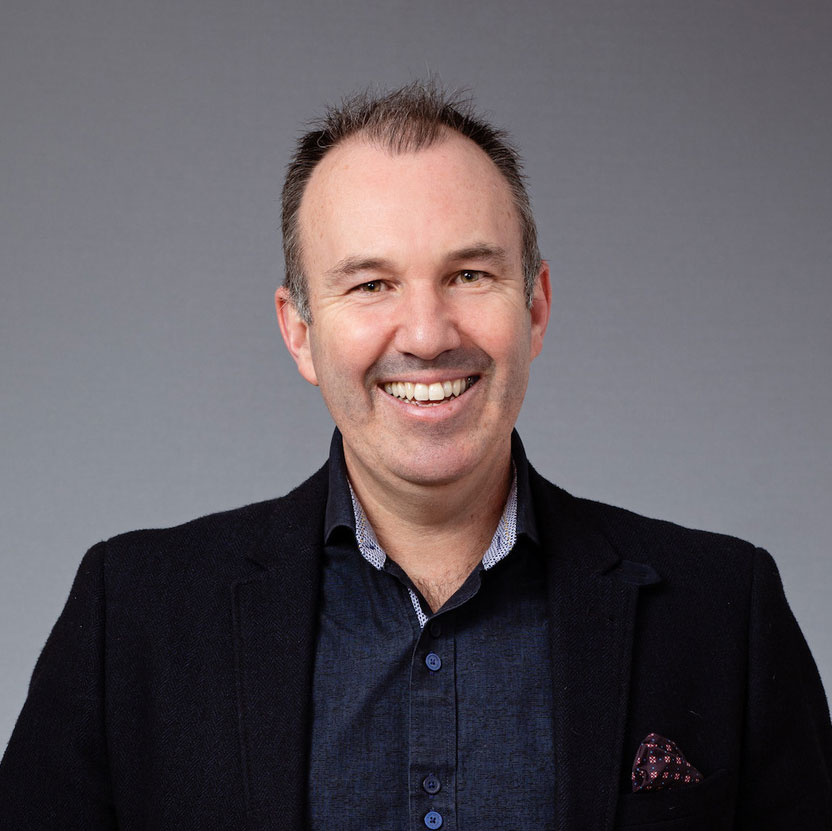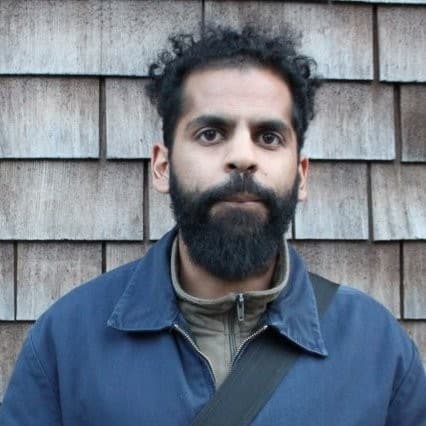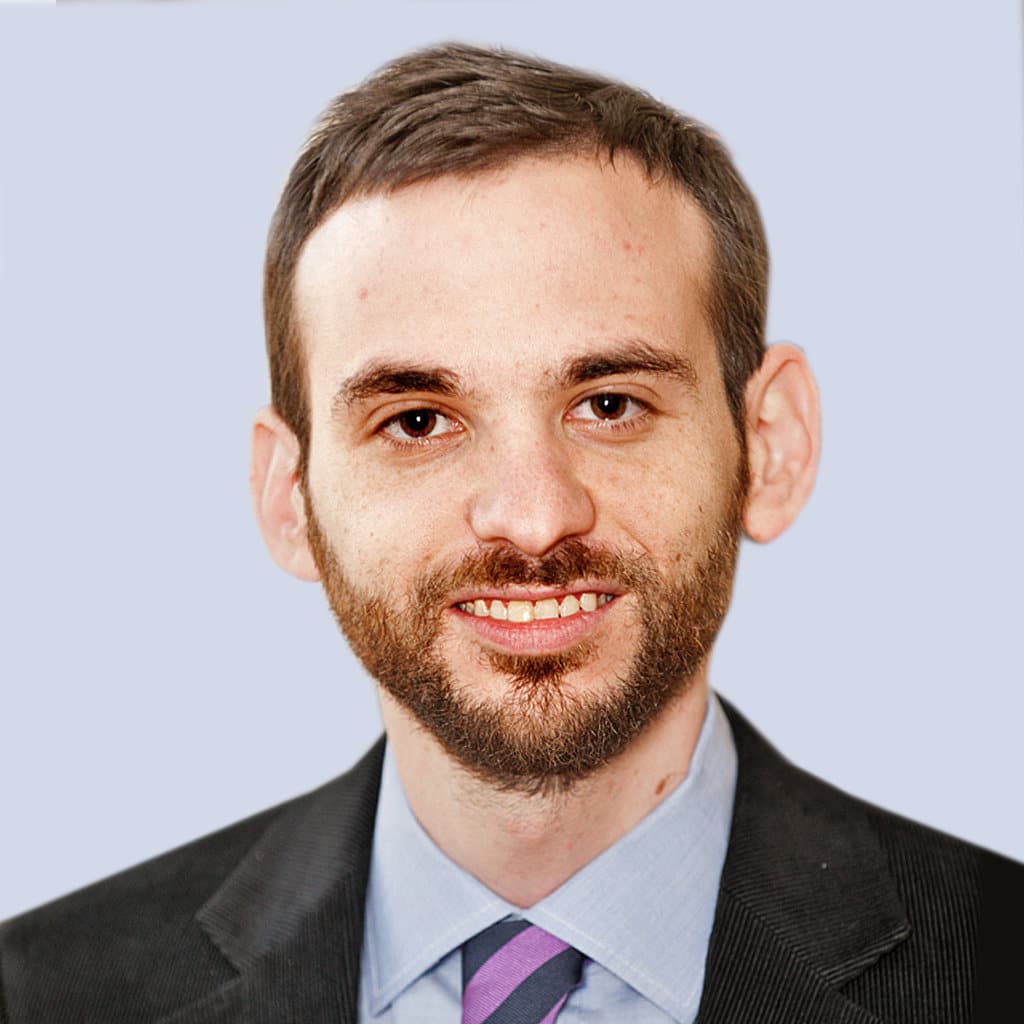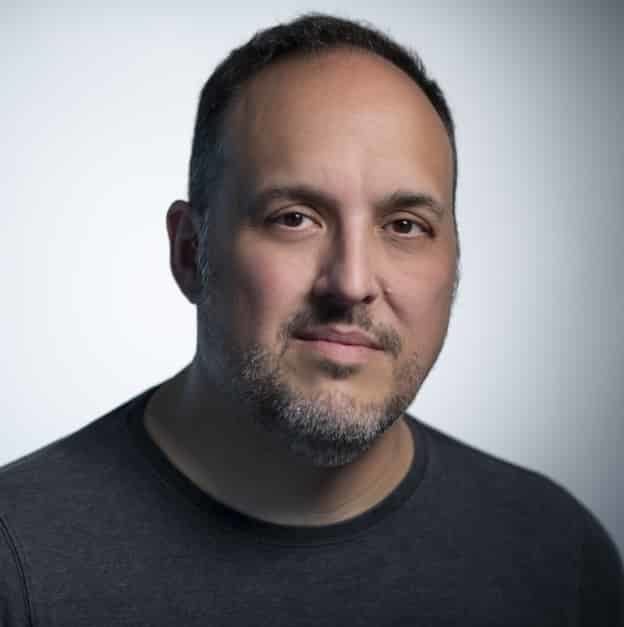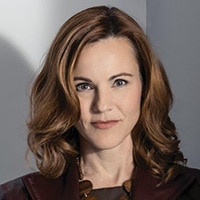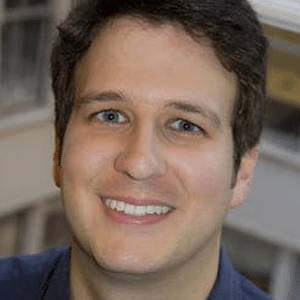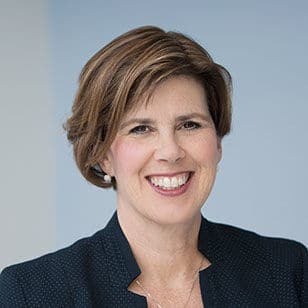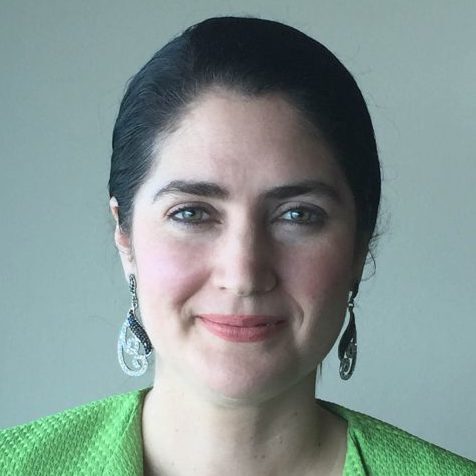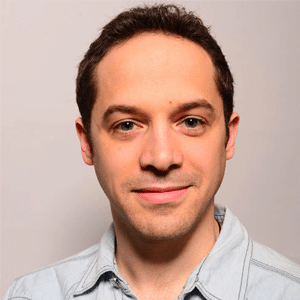Data is a Weapon
With Stan McChrystal, Retired US Army General
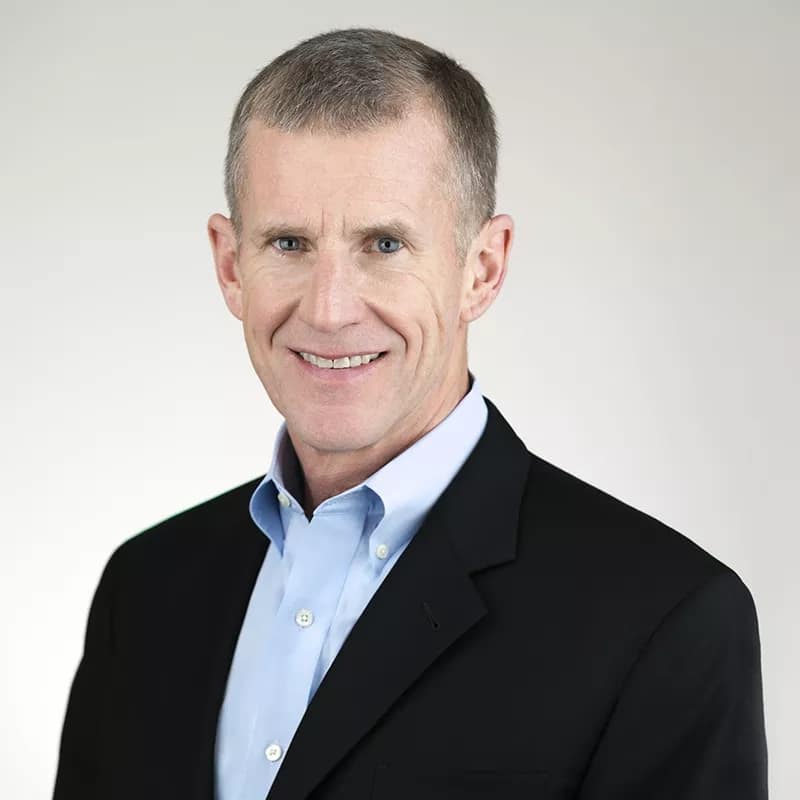 |
Stan McChrystal Founder & CEO, McChrystal Group Stan McChrystal, a business consultant and retired four-star general, is the former commander of U.S. and International Security Assistance Forces (ISAF) in Afghanistan and the former commander of the nation’s premier military counterterrorism force, Joint Special Operations Command (JSOC). |
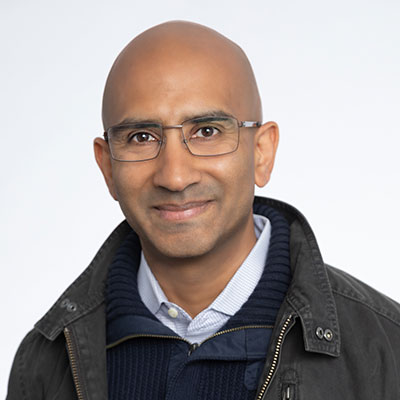 |
Satyen Sangani Co-founder & CEO of Alation As the Co-founder and CEO of Alation, Satyen lives his passion of empowering a curious and rational world by fundamentally improving the way data consumers, creators, and stewards find, understand, and trust data. Industry insiders call him a visionary entrepreneur. Those who meet him call him warm and down-to-earth. His kids call him “Dad.” |

Stan McChrystal
Founder & CEO, McChrystal Group
Stan McChrystal, a business consultant and retired four-star general, is the former commander of U.S. and International Security Assistance Forces (ISAF) in Afghanistan and the former commander of the nation’s premier military counterterrorism force, Joint Special Operations Command (JSOC).

Satyen Sangani
Co-founder & CEO of Alation
As the Co-founder and CEO of Alation, Satyen lives his passion of empowering a curious and rational world by fundamentally improving the way data consumers, creators, and stewards find, understand, and trust data. Industry insiders call him a visionary entrepreneur. Those who meet him call him warm and down-to-earth. His kids call him “Dad.”

Stan McChrystal
Founder & CEO, McChrystal Group
Stan McChrystal, a business consultant and retired four-star general, is the former commander of U.S. and International Security Assistance Forces (ISAF) in Afghanistan and the former commander of the nation’s premier military counterterrorism force, Joint Special Operations Command (JSOC).
 Satyen Sangani
Satyen Sangani
Co-founder & CEO of Alation
As the Co-founder and CEO of Alation, Satyen lives his passion of empowering a curious and rational world by fundamentally improving the way data consumers, creators, and stewards find, understand, and trust data. Industry insiders call him a visionary entrepreneur. Those who meet him call him warm and down-to-earth. His kids call him “Dad.”
Stan McChrystal: (00:06) And I go into one of our … the main base, which was outside Baghdad and I find this pile of garbage bags, plastic garbage bags, and I said, “What is this?” This was a place where we kept detainees and we had our interpreters. And they said, “Well, that’s intelligence materials.” I said, “What?” And it was laptops and telephones and printed materials that had been captured on objectives, where we’d gone and captured somebody, a bad guy. And we’d put all the stuff we captured and we’d set it down.
Stan McChrystal: (00:38) And I said, “Well, what’s it doing here?” And this pile is 10 feet high. And they said, “Well, when the interpreter, the translators have free time, we have them open it up and look and see if there’s anything of value there.”
Well, intelligence is like fruit. It goes bad very, very quickly. And so this stuff sitting there was literally like rotting fruit, and very quickly it has no value.
Satyen Sangani: (01:03) The voice you’re hearing today belongs to today’s guest, retired four-star general Stanley McChrystal. Today, Stan is the managing partner at the McChrystal Group and has also co-authored the book Team of Teams: New Rules of Engagement for a Complex World, the book My Share of the Task, and most recently, Risk: A User’s Guide.
Satyen Sangani: (01:23) Much of the knowledge and experience that powered writing these books was developed from 2003 to 2008, when General McChrystal was the commander of the Joint Special Operations Command, also known as JSOC. In that role, he developed and led the U.S. Army’s counterinsurgency in Afghanistan.
Satyen Sangani: (01:42) One of the key ways he did this was by harnessing the value of data and much more critically, empowering his teams to act on what they saw. As General McChrystal explains in this interview, data is a weapon. When he assumed the leadership of JSOC, he realized this weapon was locked up. The prevailing wisdom in the U.S. military and the national security apparatus was that we were much more secure if information and intelligence were contained and even siloed. That changed under his leadership.
Satyen Sangani: (02:10) In this frank conversation, Stan shares what he learned through that experience. What did it take to lead cultural change in an organization as huge as the U.S. military? You’ll find out as you listen to this fascinating conversation.
Producer Read: (02:31) Welcome to Data Radicals, a show about the people who use data to see things that nobody else can. This episode features an interview with Stan McChrystal, managing partner of the McChrystal Group. In this episode, he and Satyen and discuss Stan’s experiences building a data culture in the U.S. military, evaluating leaders, and the concept of empowered command.
Producer Read: (02:51) This podcast is brought to you by Alation. Alation enables people to find, understand trust, govern, and use data with confidence. More than half of all Fortune 100 companies use Alation to support data-driven decision making. Organizations like Cisco, Pfizer, and US Foods drive data culture in innovation with Alation. Learn more about Alation at A-L-A-T-I-O-N.com./span>
How Do You Change an Organization as Massive as the U.S. Military?
Satyen Sangani: (03:16) When Stan took command of JSOC, it was losing the war on terror. He quickly saw that JSOC had to change its methods to fight a new kind of war. So I asked him, how do you change an organization as massive as the U.S. military?
Stan McChrystal: (03:29) We’d like to say we change because a very brilliant leader comes along and visualizes the future, and I’d like to claim that that was the case, and I did that, but that’s just not true. The reality was I took over an organization that was the best of its kind in the history of the world. I know that’s a fairly audacious statement, but the counterterrorist forces that the U.S. created in the wake of the failure of the Iran rescue mission in 1980 …
Stan McChrystal: (03:59) And it took about 22 years to get there, but by the time I took command of it in 2003, we were the best counterterrorist force ever created, and yet, starting in the fall of 2003, what we found was this extraordinarily elite organization, purpose-built to defeat terrorist networks, suddenly ran into a situation where we weren’t just failing — we were losing.
Stan McChrystal: (04:26) The skills we’d honed, the processes we’d perfected, suddenly were not fit for purpose in the new environment, and really in Iraq against the organization that became known as Al-Qaeda in Iraq, we found that this very different kind of entity led with a different operating principle fueled by information technology and operating in a new, more complex environment in that situation was better than we were, was more effective than we were.
Stan McChrystal: (04:58) And so it wasn’t a case of the visionary saying, okay, we could be better, it was a case of a commander taking over, expecting to operate in the way we always had, just do it a little bit better and instead realizing we’re losing. And so we’ve got to make a fundamental transformation in the middle of the fight.
Satyen Sangani: (05:17) You talk about this idea within the book of efficiency and how so many large organizations are basically built on the backs of efficiency and scale. And your organization at the time, I think was almost typified by that. How did you convince this massive organization to change?
Stan McChrystal: (05:38) I think there were several parts to it. I’ve always been fascinated by efficiency. I just think efficiency is something we should always be trying to get out of our organizations because it gives us spare capacity to do things. So efficiency is not a bad thing. In JSOC, if you had said, “You guys are focused on efficiency,” they would’ve pushed back. They would’ve said, “No, we’re focused on effectiveness.”
Stan McChrystal: (06:01) And that wasn’t untrue, but they were focused on being effective the way they wanted to be effective. So they had a vision over what was effective, and therefore they had learned through a number of years that certain things worked and therefore they wanted to keep doing that because their experience base told them that’s what worked, and those were within their current skill sets.
Stan McChrystal: (06:26) And so what we had to do was make the case to ourselves first that we were not being effective. And it was a little bit challenging because at the beginning, it was clear that the United States was struggling in Iraq, but we could step back and say, the part that we are doing, the execution of our operations, is actually going pretty well.
Stan McChrystal: (06:51) And so we can make an argument that we are effective and it’s everybody else’s fault and problem that we are not being successful overall. And yet, you step back and you say, “Well, that may make us feel better, but we will still be on the losing side.”
So we had to do far more, which pushed us into a different area that said we have to do much more in scale, more effect. And that meant we had to do more operations, which meant we couldn’t pick and choose and wait for perfect conditions, perfect intelligence and whatnot. We had to affect the situation more aggressively.
Stan McChrystal: (07:28) We had to go gather intelligence. We had to go create operations to change the dynamic on the battlefield, to create opportunities for us to go. And all of these things ran counter to an organization who at its heart and soul abhorred failure. And let me tell you what I mean by that. We say “the risk of failure,” and then you think, “Well, people won’t accept personal risk,” but that wasn’t the problem. It wasn’t lack of physical courage, it’s people didn’t want to do operations that failed.
Stan McChrystal: (07:59) And so what they did was they tried to set up conditions so that everything was perfect before they pulled the trigger so that their probability of failure was very, very low. Well, of course, that is by definition self-limiting. If you’re not willing to do lower-probability things, you’re not willing to do very many things. And so, as I used to tell them, your batting average may be high, but we’re not scoring many runs. We’re going to lose the games.
Shifting the Military Mindset to Focus on Outcomes
Satyen Sangani: (08:26) And just so the listeners can get texture, what did ineffectiveness look like on the outside? Just so that they can get a sense for the scale of problem you were dealing with. When you said “We were being ineffective,” what were the facts that you confronted the institution with in order to be able to show that ineffectiveness?
Stan McChrystal: (08:42) To get very specific, when I took over, we’re doing about one raid a week and our mission was to go after the leadership: we call them HVTs, high value targets, the leadership of Al-Qaeda in Iraq, to capture or kill them, and therefore decapitate the organization.
Stan McChrystal: (08:59) And you do about one a week, four a month. We’re successful about 70 percent of the time. And at the end of the month, we can high-five and say, we took three enemy leaders out of the fight. Meanwhile, every month Al Qaeda in Iraq is growing significantly. Our effect doesn’t seem to have any impact on them whatsoever. They’re getting more confident. They’re getting more momentum. They’re getting more lethal. And yet we say, well, look, we’re taking three leaders out, and it’s sort of like, so what?
Stan McChrystal: (09:26) So we start increasing what we’re doing just by pushing ourselves harder. And we actually get up to 18 raids a month, one every other night. And we think that we are now as fast as the physics of our processes and our culture will allow, and we’re still successful about 70% of the time. So we’re taking 13 or 14 enemy leaders out of the fight. And we almost want to say, hey, now we are more than doing our part, everybody else has got to pony up.
Stan McChrystal: (09:57) And the reality is, that’s a stupid argument because the same thing was happening, the enemy’s still getting stronger, faster, better. So our level of attrition at that was not having a demonstrable effect. So we started changing even more dramatically and we said that everything we have done is in play. There’s nothing we do now that is sacred. What we are going to do — and I gave the big hand wave — is whatever it takes to win.
Stan McChrystal: (10:25) And you, organization, pointed at them, are going to figure it out because I don’t have that answer. All I know is we’re going to do what it takes to win, so let’s start figuring it out. We’ll iterate to it and we’ll stop doing things that don’t work and we’ll do more of the things that do work.
And that was a significant shift in the mindset of the command in that we were no longer experts called in to do certain things and everybody else had the responsibility for the wider. We now accepted that we had a huge part of the responsibility for the outcome and therefore, it changed how we executed.
Stan McChrystal: (11:05) It also changed our relationship to all the other players on the battlefield, conventional forces, allied forces, Iraqi forces. We suddenly realized that we had to team with them every chance we could because them being more effective and us together being more effective was ultimately in our interest. It’s all about getting the outcome we have to have. That became very powerful across the organization as an energizing factor.
Finding the Right Leaders
Satyen Sangani: (11:33) In this world where you’re transforming on some level, how the organization thinks about itself, how it operates, you’re hiring or bringing in leaders. And there’s got to be the case where there’s some leaders that just couldn’t get the memo and didn’t understand it. How did you qualify, and what did you look for when you found these new leaders? How do you assess that somebody was prepared for leadership in this new style of combat?
Stan McChrystal: (11:59) The first thing we did was by going to a tremendous level of transparency. Every day, the entire command was on a 90-minute video teleconference. That sounds unthinkable, but the reality is we were sharing information more aggressively than ever before. We solved a lot of our leadership problems there, not in the way traditional, but we created this normative pressure. Everybody could see what everybody else was doing and not doing.
Stan McChrystal: (12:26) So that solved more of it than I expected. However, you’re right, there’s always a group that can’t, or won’t get on with it. And early in, it took me a difficult road to figure out, how do you assess those people? When I was a young, brand new lieutenant, I’d ask my father, “Who’s going to be good in combat? What commander’s going to be good in combat? And how can you tell who’s going to be good?”
Stan McChrystal: (12:51) And he says, “You can’t. Not until you’re in combat.” I said, “How do you tell?” He says, “Some people keep asking for more information until they can drive the risk of their decision to zero.” And that absolutely comes out. You start to see people who won’t execute until they’ve got so much data understanding that their risk in the decision is nothing.
Stan McChrystal: (13:16) The problem is usually by the time in combat or even in a dynamic business environment, by the time you’ve got that, the opportunity’s either gone or the risk has overwhelmed you. So you got to decide earlier. There’s something that I think — part of it’s learned, but some of it’s born — you’ve got to have the ability to live with that fact that you are making a decision based on values and probability, and you got to be able to live with that.
Stan McChrystal: (13:41) And some leaders struggle with that. They struggle with the danger of that and they struggle with the aftermath of that. They become gun shy, they become tentative. And so when I saw leaders that couldn’t wipe the whiteboard clean and move forward the next day, then it was clear that we had somebody weak and in some cases that had to be moved out because they just didn’t have the right constitution for the kind of effort we were involved in.
Satyen Sangani: (14:07) I feel that pretty deeply. I mean, I always joke that most of the decisions — even in a relatively small company — that get to me are ones that just don’t have the data. But it’s interesting because this is a podcast for people who literally are devoting their entire lives to data. And one of the chapters in your book or sub-segments in your book is “Big Data Isn’t the Answer.”
Satyen Sangani: (14:29) And so that leads to a couple of different questions, which is, well, one, is it possible for people to be trained to know when they have enough information? Were you able to look at leaders and train them to realize, “Wait, I’ve got to make a call now, and enough is enough. I’ve just got to get going,” or how do you get that feel?
Stan McChrystal: (14:49) I’d like to back up a little bit, because something you say is really important to me and that is this idea of data or information or understanding. There is, I don’t know, you could say a comfort in ignorance. If you have no access to information and you’ve still got to go do something, you get to make a decision and you know you’re ignorant, so you just blunder ahead. You can’t make it wrong, you just make it.
Stan McChrystal: (15:19) But once you have the ability to gather information, a level of responsibility changes. Now, Joint Special Operations Command, the counter-terrorist force that I commanded, before this period of its history, had been more like a bullet than a gun. The National Command Authority would gather information, the intel community would do it. They would make a decision on when to launch American counterterrorist forces. They would point the gun and then they would pull the trigger. And this bullet, JSOC, would go out. And if it was well aimed and well timed, it would have very good effects. But if it wasn’t, it would not.
When we got to this point in the war, suddenly we realized we weren’t the bullet anymore, we had to be the gun. And all the real power came from understanding where to point the gun and when to pull the trigger, which meant you need to understand. We started to gather data.
Stan McChrystal: (16:12) And at the beginning of the war, I tell people that JSOC was about 80 percent operations, but during the war, it flip-flopped. The entire organization became obsessed with information, data. You would find commandos with big arms and shoulders just hunched over laptops, hour after hour consuming information from Predator downlinks or other sources.
Stan McChrystal: (16:37) So the entire organization started to realize, it was as though we were putting together a huge million-piece jigsaw puzzle, and everybody’s leaning over it, everybody needs to know what the picture is supposed to be and then how to put those together. And so that meant that from the very beginning to saying, “Okay, where is the data? Where is the information we need? How do we go get it?” And we started doing operations to gather intelligence for the entire purpose of just getting intelligence.
Stan McChrystal: (17:10) Whereas before, we used intelligence to go get a bad guy or something, now we would do operations just because we knew that the more pieces in the jigsaw puzzle, the faster it goes. And that fundamental change really made the organization into a different entity. We became a network. Before, we’d been an entity that did certain things, now we became a network with tentacles everywhere that sucked up information. And then to a degree, distributed it, too, distributed it to people who might be able to do things with it.
How Information Gathering Is Impactful
Satyen Sangani: (17:47) Part of the operations that you ran were obviously to execute whatever the objective may have been. But you just referenced that you also ran a whole bunch of operations for information gathering itself. Sometimes within many of these organizations that we sell to and service, and certainly even in our own organization, often we just don’t have the data at our disposal. And this idea of, look, the data team’s job might even be to go actually just gather the information I think is a very interesting one. So tell us about where that could be impactful and how you ran some of those operations.
Stan McChrystal: (18:17) It’s often you have data you don’t know you have. When I first took command of the organization — and remember, I’d grown up in it, so I’m not clean here — but suddenly I become the commanding general, and in October of 2003, I go over to theater, but particularly to Iraq to see how we’re doing.
Stan McChrystal: (18:33) And I go into the main base, which was outside Baghdad. I find this pile of garbage bags — plastic garbage bags — and I said, “What is this?” This was a place where we kept detainees and we had our interpreters, and they said, “Well, that’s intelligence materials.” I said, “What?” And it was laptops and telephones and printed materials that had been captured on objectives where we’d gone and captured somebody, a bad guy. And we’d put all the stuff we captured and we’d set it down.
Stan McChrystal: (19:03) And I said, “Well, what’s it doing here?” And this pile is like 10 feet high. And they said, “Well, when the interpreter, the translators have free time, we have them open it up and look and see if there’s anything of value there.” Well, intelligence is like fruit: it goes bad very, very quickly. And so this stuff sitting there was literally like rotting fruit, and very quickly, it has no value.
Stan McChrystal: (19:27) And we were putting our people at physical risk to go capture this material. Then we’re taking this trove of data and we’re just leaving it in a pile to rot because we didn’t have the capacity or the focus, et cetera. So we started changing that. We started creating exploitation cells with translators and intel analysts. We started to be able to push it back to the United States for simultaneous translation and exploitation. We really created over the next couple years, a machine that did this, that was extraordinarily fast and effective.
Stan McChrystal: (20:05) But the effect was even stronger than you thought, because instead of just getting the value of data that we already had, what we found was when you show that you’re able to digest and use the value of data, suddenly everybody understands how valuable data is and people out across the organization start trying to get more data because they know that they see the value from it.
Stan McChrystal: (20:28) So suddenly not only does the value of data rise, it’s the appreciation of it across the organization. And they know that all we have to do is understand this, and if we understand this, we can act on this and we can have this effect. If we don’t understand, it’s blind-man’s bluff.
Stan McChrystal: (20:46) And so we started realizing what we didn’t know, where that information might be and then we would go to do operations, to create an effect, to produce that information. Sometimes it’s just stimulating an enemy reaction so that if you know a part of an organization, you do an operation to stimulate them to react and to communicate. We could see that communication, we could learn from the connectivity to that. We could respond to that, and then we could get more and more effective.
Stan McChrystal: (21:17) And then sometimes you realize our own systems can be our own worst enemies. In 2007, we captured Al Qaeda in Iraq’s foreign fighter personnel records, and that’s kind of amazing. You think their personnel records, what are we talking about?
Stan McChrystal: (21:33) Well, Al Qaeda in Iraq was very methodical. Every time a young man from North Africa or from Saudi Arabia came in to be a suicide bomber or a fighter, they kept records on him. And we did an operation in the northern part of Iraq and we hit a target and we captured this trove of information.
Stan McChrystal: (21:52) And I remember I was there with my intel guy and I go, “Wow, this is extraordinary. If we could just share this information with the governments of the countries that these young men came from, they could go back and they could start to dry up the sourcing of this and stop what we call rat lines coming here.” And I said, “But it’s classified. How do we share this?”
Stan McChrystal: (22:14) And my intel officer goes, “Well, it’s only as classified as you say it is.” And I said, “Wait a minute. I’m part of the big bureaucracy. Explain that to me.” He says, “You are the capturing command, so you get to set the classification level.” And I said, “You’re kidding? So I could say this is all unclassified?” He said, “You could.” And I said, “Well, CIA might not like it. Other people might not like it.” And he said, “They might not, but they would get over it.” And so I said, “Great, it’s unclassified.”
Stan McChrystal: (22:47) I mean, you say, “Well, wait a minute, McChrystal’s giving away secrets to the enemy.” It’s their personnel records, they know what’s in them. And also they know we hit the target, so it’s not a news flash there. But instead, we shared all this information from governments around the region with extraordinary effect.
Stan McChrystal: (23:05)And so sometimes I make that point: we have data and for some reason we don’t use it because we’re used to not using it, or we don’t want to share it with somebody, or we don’t want to take the time to put it in context of what value it may have.
Satyen Sangani: (23:22) I just want to reiterate this for the audience, because there are two just incredible lessons there. So in web companies like Facebook or the like, you A/B test and you literally are able to say, “Oh, green button, blue button, we’re going to have somebody click on the green button.” And on some level you are running ops in order just to be able to stimulate the enemy and literally A/B test their reaction and therefore, gather data about that, which I think is just magical. And the idea that says that doesn’t have to be an online thing, it can be an offline thing too, is I think transformational to many of the people who are in these companies.
The Ability to Use Data Itself Is a Weapon
Satyen Sangani: (23:56) And the second is that your ability to use data itself is a weapon, and being able to declassify the data on some level gave you strategic capability that was just as powerful as any physical weapon might be, if not more so, because you could stimulate all this reactivity, which is just really incredible.
Satyen Sangani: (24:18) You’ve talked a little bit about information and you’ve certainly talked about the idea of commanders on the ground using this information. But one interesting part of the book and certainly many of your theories is that there’s this idea of “empowered command” and teams at different levels are making autonomous decisions. Tell us a little bit about that because on some level now you’re effectively saying, “Look, I’m building this network,” which you said a couple of times, which is different from that traditional hierarchical organization. So how does that evolution happen? And tell us more about that.
Stan McChrystal: (24:53) We see the basic concept in many areas, like franchising or whatever, where local entities are empowered and encouraged to adapt to local conditions so that they can produce an outcome, but what’s coordinated is the overall outcome. We together are trying to put together the jigsaw puzzle or whatever it is that the joint mission is, it’s critical that everybody have a common understanding of that.
Stan McChrystal: (25:19) And so within that, though, if you can unlock people’s ability to get it done, whichever way makes sense for them in their particular situation, you suddenly do two things. One, you get them to be much more suited to what’s actually happening on the ground there, but second, they get a level of ownership. I found that if I told somebody to do a task, they might try to do that task, but if it didn’t work, they’d say the boss made a bad decision.
But if I say, “Create this effect, whatever you have to do, to do that — figure it out,” they owned it because they felt a level of responsibility for what approach that they chose, and it made it much stickier. You got a lot more initiative from them, you got a lot more energy and it’s much stickier. And you also emerge identifying the kinds of leaders that become most effective for you.
How to Drive Cultural Change
Satyen Sangani: (26:16) And I think that builds that organization that has that ability to react. And so it’s interesting because you’ve built this theory and certainly you’ve built the book and you’ve obviously put it into practice. And I guess this gets a little bit to this idea of cultural change, because a lot of these institutions are so big. I mean, even many of the corporations that we service are so big and they have a really, really hard time changing. Tell us a little bit about cultural change. How do you drive it? I mean, for these companies who are trying to build these data cultures where they value information, how do they think about that problem? It’s such a hard thing to approach.
Stan McChrystal: (26:56) If we think about what a culture is, the way I think of it, it’s what a people do. And you say, “Okay, well, what does that mean?” It usually means a people do what they have learned works for them over time. The culture in Afghanistan, their Pashtun culture — Pashtunwali as they call it — had a very interesting aspect where if someone from one tribe killed a person from another tribe, they would get together in a shura and they would talk it out and often they would pay restitution to the family of the person who’d been killed.
Stan McChrystal: (27:37) And you say, “Now, wait a minute. To accept payment because my brother was killed, that seems pretty mercenary.” But what they had learned over years was if they didn’t find a way to stop that, they would have a feud that would last interminably, and more people would die. So they developed this agreement system that said, “I’ll agree to pay, you’ll agree to accept because we’ve learned from generations, we just can’t have nonstop blood feuds.” And so they found a way to let the pressure out of the system.
Stan McChrystal: (28:11) So culture is a series of adaptations to our lives. When you’re talking about changing a culture, you’re talking about changing the way people do something that has an underlying logic to it. And so just coming in and saying, “What you do is stupid,” is really dangerous if you don’t understand the underlying logic that it’s based on. Why are they that way? Why have they made those decisions?
Stan McChrystal: (28:39) Culture in a company is less long-historied than a culture in a society, so it’s easier to do that. But you’ve got to get it, why people do things, why they feel the way they do to try to change that. So I think when you take it on, you’ve got to start by changing what people do. People often say, “I’ll change their culture and then their behaviors will change.” And I actually think you got to go the other direction. You’ve got to change the behaviors and then the culture will follow along.
How to Get People to Think About Winning in a Different Way
Satyen Sangani: (29:13) Yeah. It gets back to an adage of parenting, which is praise the behavior, don’t praise the outcome on some level. I guess then what’s the analog for what you did or how you did that as a leader? How did you incent people? Everybody wants to win, but how did you get people to think about winning in a different way? You mentioned maybe highlighting successes, but tell us more there.
Stan McChrystal: (29:37) First off we had to define winning differently than our organization had seen it before. Before they had seen winning from their personal view as being effective in the task given them. And we had to redefine that to winning had to be success in the broader mission, that was broader than them or, in fact, our command. And that was a significant redirection or redefinition of what success actually looked like and that was very important.
Stan McChrystal: (30:08) And then we had to change some other aspects of the culture. We had aspects of elitism that said, “I don’t deal with other people, I’m pretty insular in my elite world.” And those were comfortable and there was some logic to them, but the reality is they were counter to what you had to do to be effective in a broader community concept.
Stan McChrystal: (30:30) And so we had to keep pushing, said, it is the effectiveness of the community concept that matters, that’s the metric we will have to follow. And so you have to keep pulling people to that. Some people get it real quickly, some people get dragged, kicking and screaming, but that’s what I felt we had to do.
Satyen Sangani: (30:48) Yeah. And I think in the military you have a whole bunch of people who are obviously, if nothing else, patriotic. And so getting that alignment is probably super helpful and possible. There’s obviously another counter example, which is Afghanistan itself.
Mechanisms to Achieve Success
Satyen Sangani: (31:02) And so we’ve recently pulled out, lots of people point out to it as this example of failure to change culture or failure to do this thing called nation building. Tell us about your perspective on that. I mean, was it an abject failure? What were the mechanisms through which you think that we achieved some success or could have done better?
Stan McChrystal: (31:21) First off, I’m completely biased on this, so everybody should discount what they hear from me, accordingly. I’m a guy who was involved there for a long time, so … I don’t think it was a complete failure from the standpoint of Afghanistan is not the same country it was in 2001. There was a lot of progress and a lot of things. There’s a generation of young people with a different mindset than they had before 2001. And I don’t think that generation is going to go away. I don’t think that the Taliban government can put that back in a bottle. But I think it may take a while for that, the effect and potential of that generation, to come forward.
Stan McChrystal: (31:58) So I don’t think it was a complete failure, but it was a heck of a failure, nonetheless. I don’t think it was impossible. And we failed for a number of reasons. I think one is understanding and appreciating how hard culture change is really an exercise in humility. It is really hard to do and where you’re going to try to do it, you got to be respectful of the limits of it and how much you could do and how long it’s going to take. So that’s one.
Stan McChrystal: (32:28) The second is we let our own culture, our interagency culture, our organization’s culture, our personal cultures to make us operate in a way that curtailed our effectiveness. We didn’t learn the language. We didn’t send enough people to learn the language. We didn’t leave people there long enough. We didn’t force unity of command. There was no single person in charge of the effort.
Stan McChrystal: (32:54) I mean, sort of basic things that if your corporation was going to open an office in — you pick a country — you wouldn’t do a business plan that says, “We’re not going to learn the language, we’re not going to do the following things. Instead, we’re going to do these things,” because investors would laugh at you. And yet, we let habits and traditions, and in some cases, organizational equities and personalities stop us from being as effective as we knew how to be. We knew we were making a lot of the same mistakes we made in Vietnam, so we have no place to hide from responsibility for that.
Stan McChrystal: (33:34) Now, the Afghans deserve a full measure of responsibility, too. They got an opportunity for 20 years to get their act together, and as a group, they didn’t do it. Now, there were individuals, there are always exceptions, but the reality is they got a chance to do something difficult and they didn’t do it, and so they can’t point fingers either.
Stan McChrystal: (33:56) But now everybody’s living with it. The people of Afghanistan are living with it. Pakistan is in unrest. All the people who thought they were clever in the moment, undercutting the effort, are paying a price for the failure of that effort. Everybody would be better off had that effort, to some measure, been more successful.
Satyen Sangani: (34:18)You said something that I thought was really pretty profound, which is you said, “We also constantly messaged that we were getting out,” and almost by doing that, there was this self-fulfilling prophecy because on some level, our lack of commitment signaled there was no reason to change your habits because you didn’t have to.
Satyen Sangani: (34:40)And that to me, I thought was really just super powerful because on some level it’s true for data cultures too. I mean, if you’re going to try to build this data culture, if you want to change everybody’s behavior, people have to be all-in on the message and it has to be very consistently communicated and very clear.
How to Help Build a Better Data Culture
Satyen Sangani: (34:56) Leave us with your last bit of advice. There’s all these people here who are responsible for building information cultures with some really big companies. I mean, most of our customers are actually in the Fortune 500, Global 2000. What would you advise them to do as information providers to these people who are making decisions? How do they become more relevant? How do they help build better cultures?
Stan McChrystal: (35:16) In most cases, what I see is decision makers don’t actually make information or data-driven decisions. There is data, and then it is homogenized and put onto two or three slides and it’s brought forward and the leaders make a decision based upon what’s put in front of them.
Stan McChrystal: (35:37) And the leaders don’t understand where the data came from. They don’t understand the validity of it. They don’t understand what they’re not seeing. And so they make decisions which they believe are based on a real understanding of the situation, and too often that they are not.
Stan McChrystal: (35:53) So I think the first thing is you have to have a completely different relationship between leaders and data. And that means the people who work on data, get data, curate it, provide it, to those leaders, there’s got to be an interactional level of understanding that is completely different than most organizations have right now.
Stan McChrystal: (36:13) And it doesn’t mean that leaders won’t still make decisions. There’s still a time when you got X amount of data and the rest of it has got to be judgment or courage or some combination, therefore. But right now we have this sort of no-man’s land and real data and the understanding stops on one side and then people on the other side make these decisions and hope.
Satyen Sangani: (36:36) Yeah. That connectedness and that empathy is just, you can’t have enough of it. Well, General McChrystal, thank you for taking the time. This has been such a treat and such an honor.
Stan McChrystal: (36:47)Completely mine. And thank you so much.
Satyen Sangani: (36:53) In the military, there’s a common term: the fog of war. This describes the inherent uncertainty that all soldiers know well. As Stan and I discussed, he has a chapter in Team of Teams called “Big Data Is Not the Answer,” and unfortunately, he’s right. You can only know so much about an adversary. What do they want right now? How will they act tomorrow? There’s no way you can know every answer all the time.
Satyen Sangani: (37:22) You can only have so much information before you make a decision. At some point, you’ll have to make a choice with limited information. At some point, you’ll have to act. It isn’t easy or obvious what you should do, but in any line of work, you have to bias towards action. And that’s one of the most important lessons I took from this conversation.
Satyen Sangani: (37:41) Data’s not a substitute for hard choices. It’s a supplement that empowers and trains others to make hard choices. You can’t empower people unless you give them the best possible context and the best possible information. Learn what you can in the time you have and choose, act, learn — and be ready to handle the consequences no matter what they are. This is Satyen Sangani, CEO and co-founder of Alation. Thank you for listening.
Producer Read: (38:09) This podcast is brought to you by Alation. Are you a CDO or aspiring leader in data? Learn how you can cultivate a data-driven organization in this white paper from Gartner. Get it at alation.com/gdc.
Subscribe to the Data Radicals
Get the latest episodes delivered right to your inbox.



